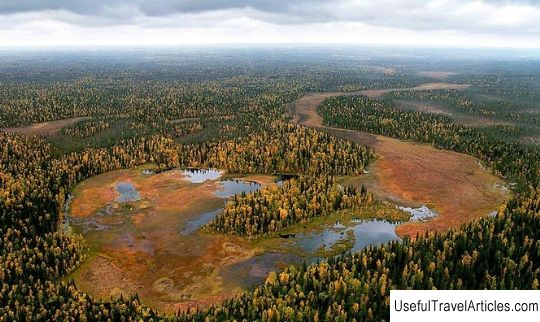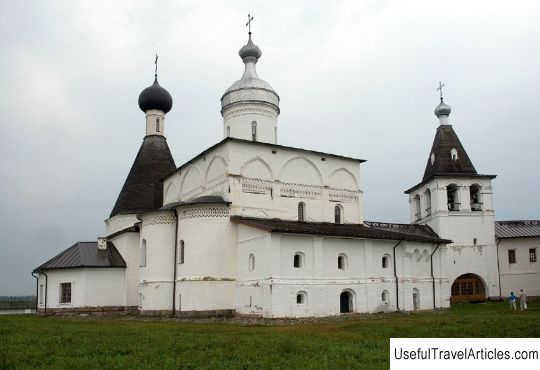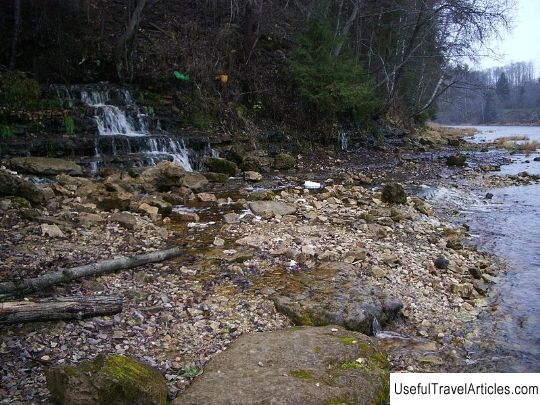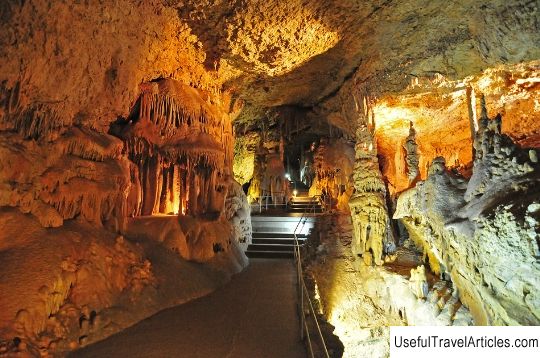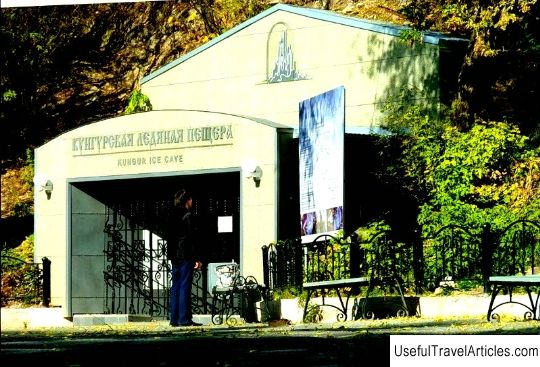Golubinsky Proval description and photo - Russia - North-West: Arkhangelsk region
Rating: 8,4/10 (655 votes) 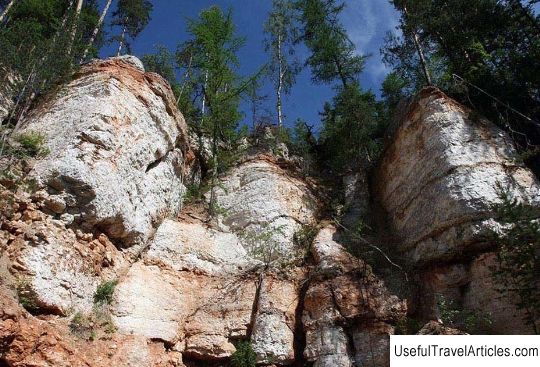
Golubinsky Proval description and photos - Russia - North-West: Arkhangelsk Region. Detailed information about the attraction. Description, photos and a map showing the nearest significant objects. Photo and descriptionGolubinsky Proval is the most famous and visited cave in the Arkhangelsk region. Until the middle of the 20th century, few people knew about it, and it was not mentioned in the literature. For the first time the cave was examined by Leningrad cavers in August 1967. The Golubinsky Proval cave is located on the right bank of the Pinega River, on the territory of the Golubinsky geological reserve, about 17 kilometers below the village of Pinega. Its length is 1622 meters, area - 5267 square meters, volume - 8255 cubic meters, amplitude - 17 meters. The entrance to the cave is located at the mouth of the Tarakanya Shchelya ravine. There is a small platform from which you can see the picturesque rocky walls of the log, and from it a steep descent into the cave, equipped with a wooden staircase, begins. The roof of the cave is located at a depth of 17 to 37 meters from the surface. There are 3 tiers of passages in the cave, which reflect the stages of its development. Golubinsky Proval begins with a vast entrance grotto (hall) about 9 meters high and 15x20 meters in size. The vault descends in steps into the depths of the cave. There is a blocky talus on the floor. From this grotto into the depths of the cave there are several passages. The cave in this area is frozen to such an extent that after the spring flood passes, the water is again covered with ice, and snow crystals appear on the walls. The Forum Hall is located 30 meters from the entrance grotto. direction. Its height is about 5 meters, dimensions - 8x24 meters. Section - arched, floor - accumulative-basement with single blocks. The bottom of the hall has a channel of a time stream, along which a stream flows during the spring flood. The main passage (tunnel) 500 meters long begins in the north-east of the Forum hall. Section - flattened oval, rhombic and complex. Width ranges from 2.5 to 4 meters, height - from 1.2 to 3 meters. The floor is presented by the basement and accumulative-basement type. On the walls you can see the mesh of sculptural symbols of pressure flows. The northern zone of the route is called the Metro. Width - about 5 meters, height - up to 4 meters. This is the most voluminous part of the cave. In spring, the course is flooded with water. In the far area of the Metro passage there are fireplaces related to the intersected nodes of tectonic cracks. They are vertical channels that open in the roof of the tunnel. 15 meters to the north from 2 adjoining fireplaces (height from 5 to 7 meters, diameter from 1, 5 to 3 meters) there is the youngest fireplace Sink (height - 4 meters, diameter - about 1 meter) with a constant streamy source. The water flowing from the fireplace makes musical sounds in the silence of the cave. She washed a hole in the plaster wall. Walking along the Metro, you will find yourself in the Round Hall. Its height is from 1.5 to 6 meters, dimensions - 7.5x16.5 meters. The eastern border of the hall is a landslide. The section is flattened and rectangular-arched. The blocky floor in the western direction turns into a steep talus. To the north of the Round Hall (at a distance of 55 meters) there is a low course. Its width is from 3.5 to 5 meters, and its height is from 0.9 to 1.5 meters. The floor is covered with clay. The course ends with a siphon. The territory of the cave is mostly dry. There are 2 watercourses: northern and southern. The length of the northern watercourse is 30 meters, southern - 20. Clays, silts, loams, sand lenses are water-mechanical cave deposits. Their maximum capacity is 3.7 meters. The clays contain 2 horizons with formations of radial-radial gypsum, and episodes of carbonate crust were revealed at the base of the section. The age of the cave aggregate is approximately 10.2-7, 8 thousand years. Carbonate incrustations are very rare and valuable decorations of the cave. Bats spend the winter in the cave. They live in its warm part, in crevices and hard-to-reach places. They can be seen only with a close examination of the cave. Throughout the main route, the cave is easily passable. It is intensively visited by tourists and locals.         We also recommend reading Lidval's house description and photos - Russia - Saint Petersburg: Saint Petersburg Topic: Golubinsky Proval description and photo - Russia - North-West: Arkhangelsk region. |
